A new way to discover Antarctica: Fly over Drake Passage

This article is brought to you by Lindblad Expeditions.
Drake Passage is, well, an explorer’s milestone, for most travellers to Antarctica keen to view the world’s last truly untamed wilderness. But it’s not always pleasant. Voyaging across Drake Passage can be a tumultuous trip lasting days which discourages many from visiting the White Continent. While the timeless appeal of exploring the endless kingdom of ice, snow and dramatic mountains which soar thousands of metres above sea level is indisputable, this ocean crossing trepidation is a very real deterrent. There’s also the consideration of ‘losing’ valuable holiday time while crossing the Drake when you could be exploring Antarctica instead. If you’re prone to seasickness, a multi-day ocean crossing seems even less appealing.
What if you could avoid the ocean crossing altogether and fly to Antarctica instead? Lindblad Expeditions-National Geographic has created alluring Antarctic expedition cruises on National Geographic Explorer which do just that, starting in November 2024. Enticing options are available to cruise one way and fly the other or fly both ways. You can now bypass the infamous Drake Passage altogether and take a scenic two-hour flight instead with the 8-Day Antarctica Direct: Fly the Drake Passage. Flights depart from Puerto Natales in Chile, landing at King George Island in the South Shetland Islands. Flying to Antarctica offers not only offers a less time-consuming way to travel, but you’ll also enjoy a rare aerial view of both Chile and Antarctica which only a privileged few get to see.
Your Antarctic adventure departs from the small fishing town of Puerto Natales, which is also the gateway to the famed Torres del Paine National Park and the Patagonian Fjords – a win-win if you want to combine your Antarctica expedition with a Chilean hiking adventure. From Puerto Natales it’s just a two-hour flight across Drake Passage to King George Island where National Geographic Explorer awaits. King George Island is home to large numbers of Weddell and elephant seals along with important penguin breeding colonies, so your Antarctic adventure begins immediately.
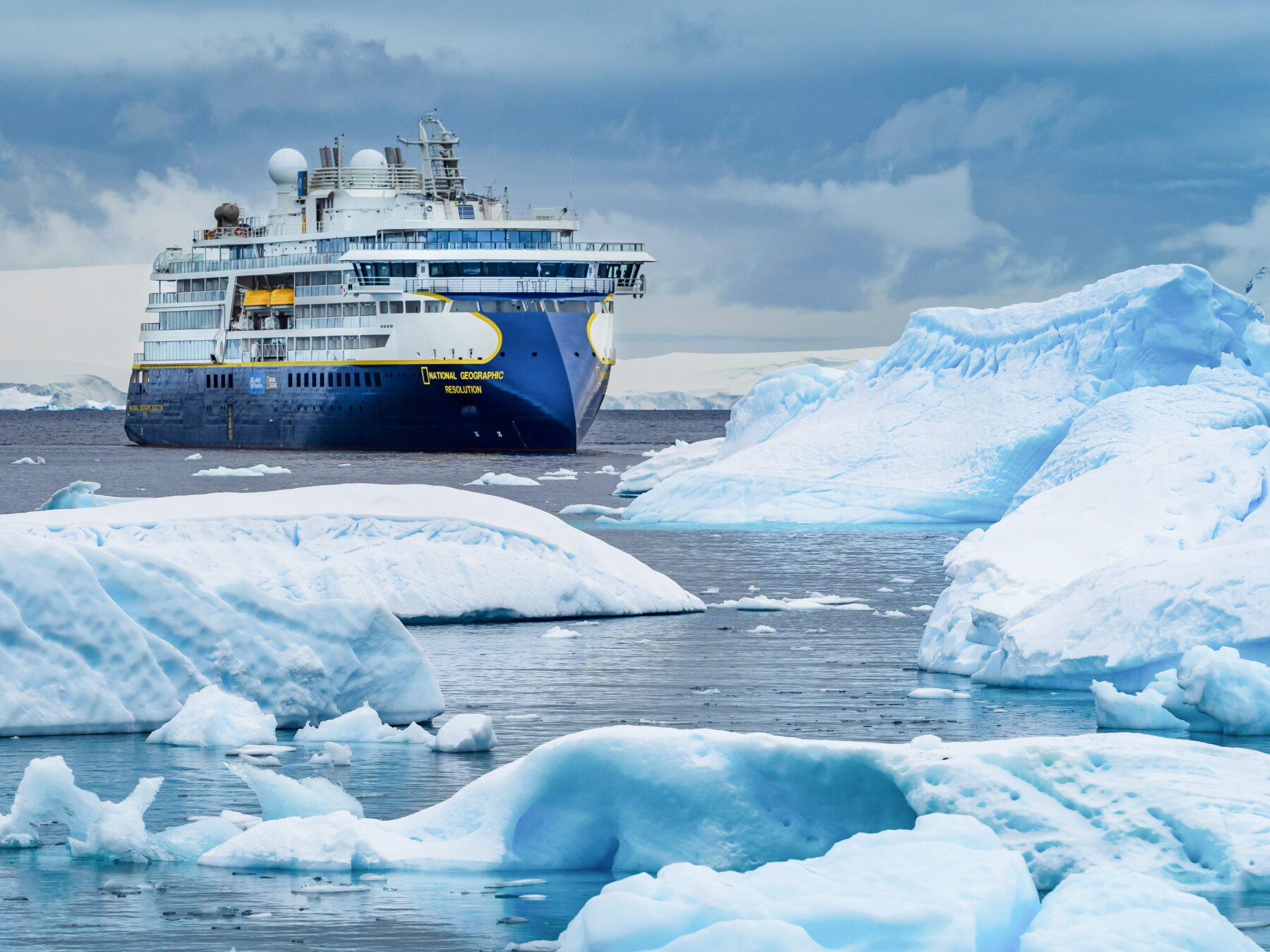
Image credit: Lindblad Expeditions
If you choose to cruise one way and fly the other on the 10-Day Antarctica Direct: Sail and Fly the Drake Passage voyage, you’ll feel the excitement build crossing Drake Passage as the magnificent White Continent looms on the horizon. During the crossing, take advantage of leisurely sea days to look for sea birds which soar gracefully above ocean swells or simply savour the views of ocean and sea all the way to the horizon. Visit the bridge for the best view of wildlife such as South American sea lion or brush up on polar history and exploration in the extensive library. Lectures too are an integral part of Drake Passage crossings as naturalists and Antarctic experts provide fascinating insights into all that lies ahead as National Geographic Explorer approaches Antarctica.
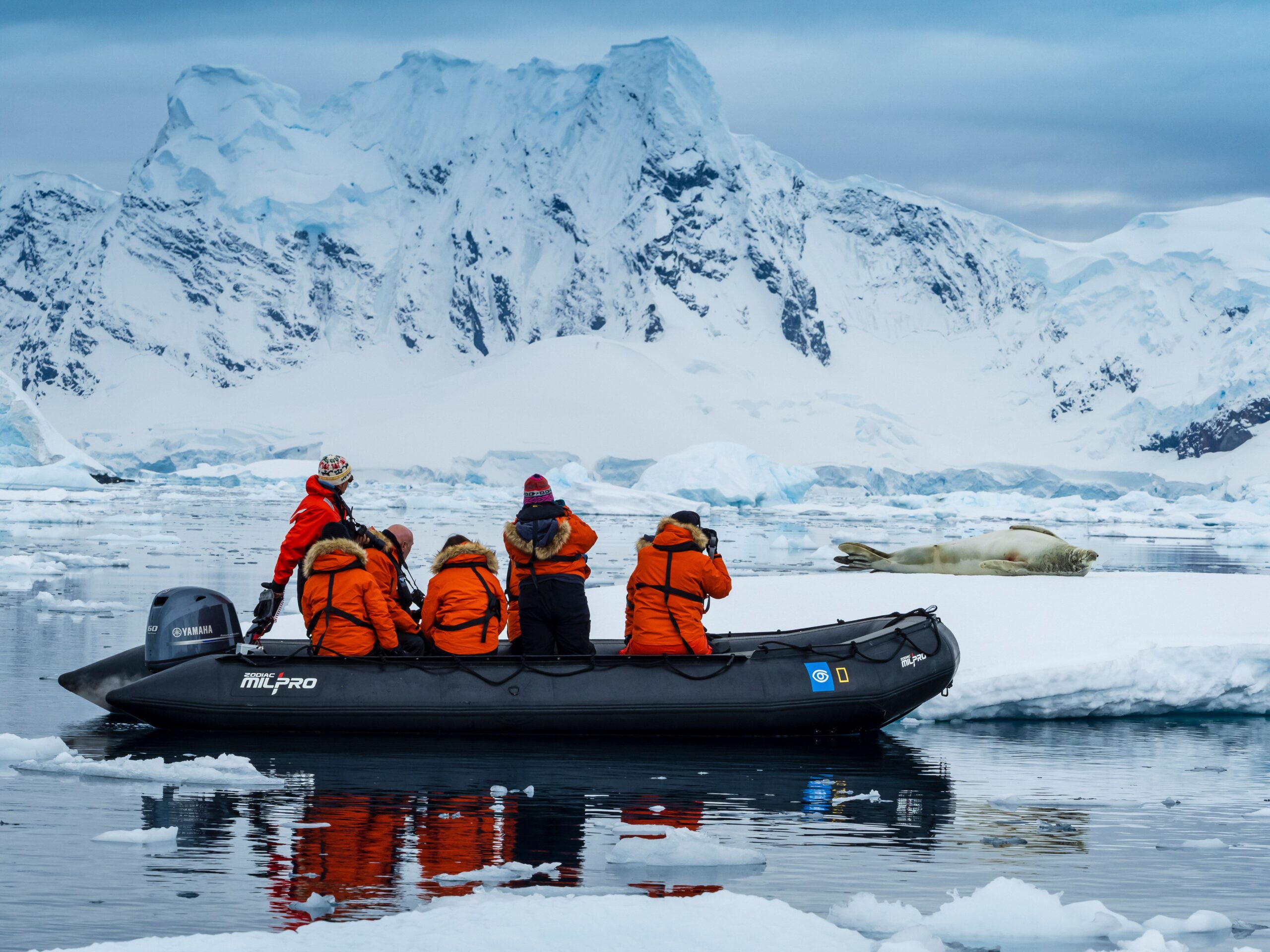
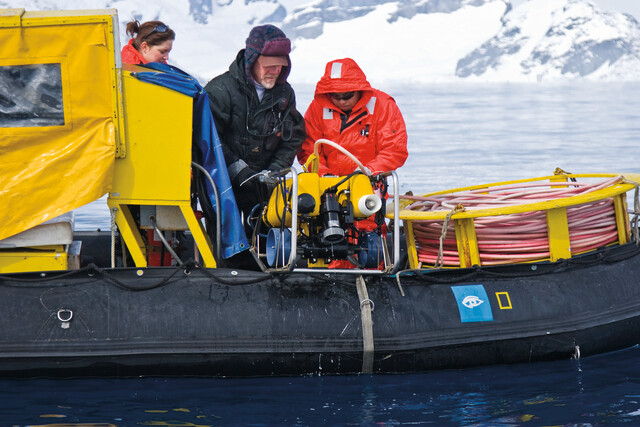
Image credits: Lindblad Expeditions.
From November 2024 Lindblad Expeditions-National Geographic offers two time-efficient Antarctic expedition options with Antarctica Direct: Fly the Drake Passage (8 days) along with Antarctica Direct: Sail and Fly the Drake Passage (10 days). Both incorporate dedicated charter flights – one way or return – between Puerto Natales and King George Island, which is a short hop across to the Antarctic Peninsula proper.
These all-new expeditions encourage adventurous, inquisitive travellers to share in the thrill of uncovering untouched places and the wilderness secrets of the peninsula’s northwest coast. Taking full advantage of extended daylight hours between November and February, days are filled with Zodiac excursions which sometimes depart late in the evening when icy landscapes are tinted in dusky sunset pastels. Excursions are led by expert guides and naturalists with specialist knowledge of Antarctica, its intriguing history and unique wildlife.
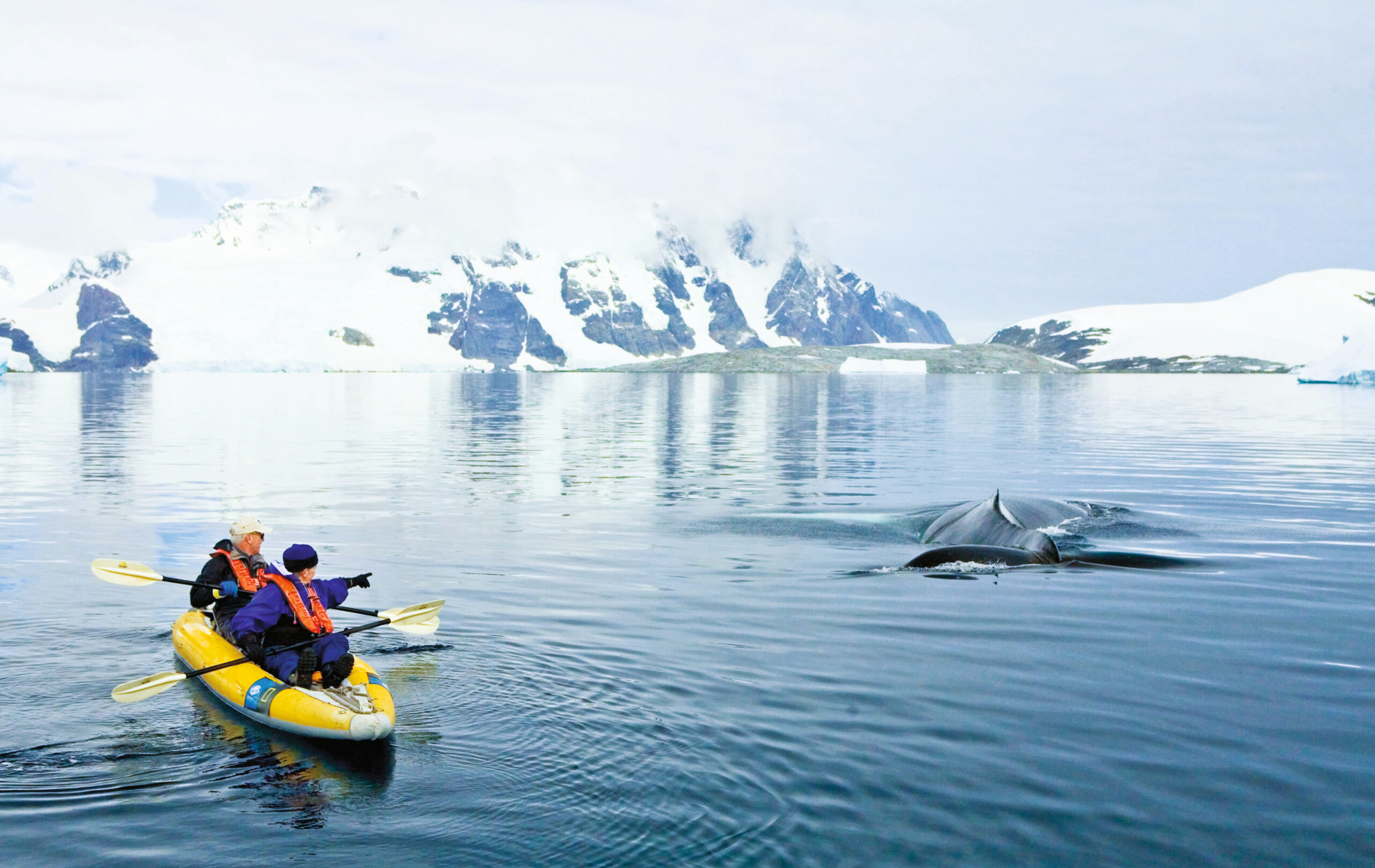
Image credit: Lindblad Expeditions
Lindblad Expeditions was founded on responsible ecotourism more than 55 years ago with a belief that travel can be a transformative force for good. Expeditions are equally entertaining, educational and informative. Supporting research and conservation projects which align with responsible tourism lies at the forefront of all expeditions. For example, Lindblad collects hydrographic data to map fragile Antarctic Peninsula regions, is a founding member of IAATO (the International Association of Antarctic Tour Operators) and supports global conservation, visiting scientist research programs and provides a platform for citizen science research through Happy Whale and e-Bird projects. Preserving Antarctica’s pristine environment while also providing immersive experiences led by expert guides is at the heart of all expeditions. Visiting these wild places with Lindblad encourages travellers to create treasured memories but so too helps minimise their own environmental footprint in delicate wilderness areas
“Antarctica is so powerful as a destination,” says Founder and CEO Sven-Olof Lindblad. “On my first visit I didn’t sleep for two days I was so mesmerised.” He adds that Antarctica is a life-changing experience which is now available to all travellers with the addition of Drake Passage flights. “I have seen a lot of travellers over the years transformed by their Antarctic travel experience. Now, we are broadening the opportunities for a wider segment of society to have that same life-changing experience.”
Operating as a carbon-neutral company committed to reducing its footprint, Lindblad Expeditions-National Geographic operates a fleet of ice-strengthened ships. National Geographic Explorer has travelled from Arctic to Antarctic regions and is equipped with polar-specific equipment such as kayaks, a fleet of Zodiacs and a Remotely Operated Vehicle (ROV) which offers low impact viewing and research into Antarctica’s little-seen undersea world.
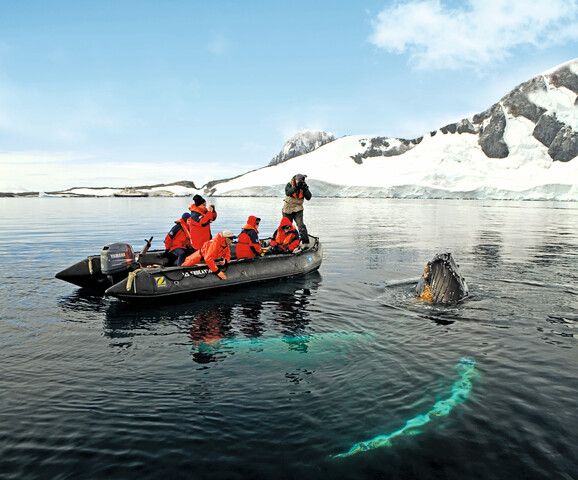
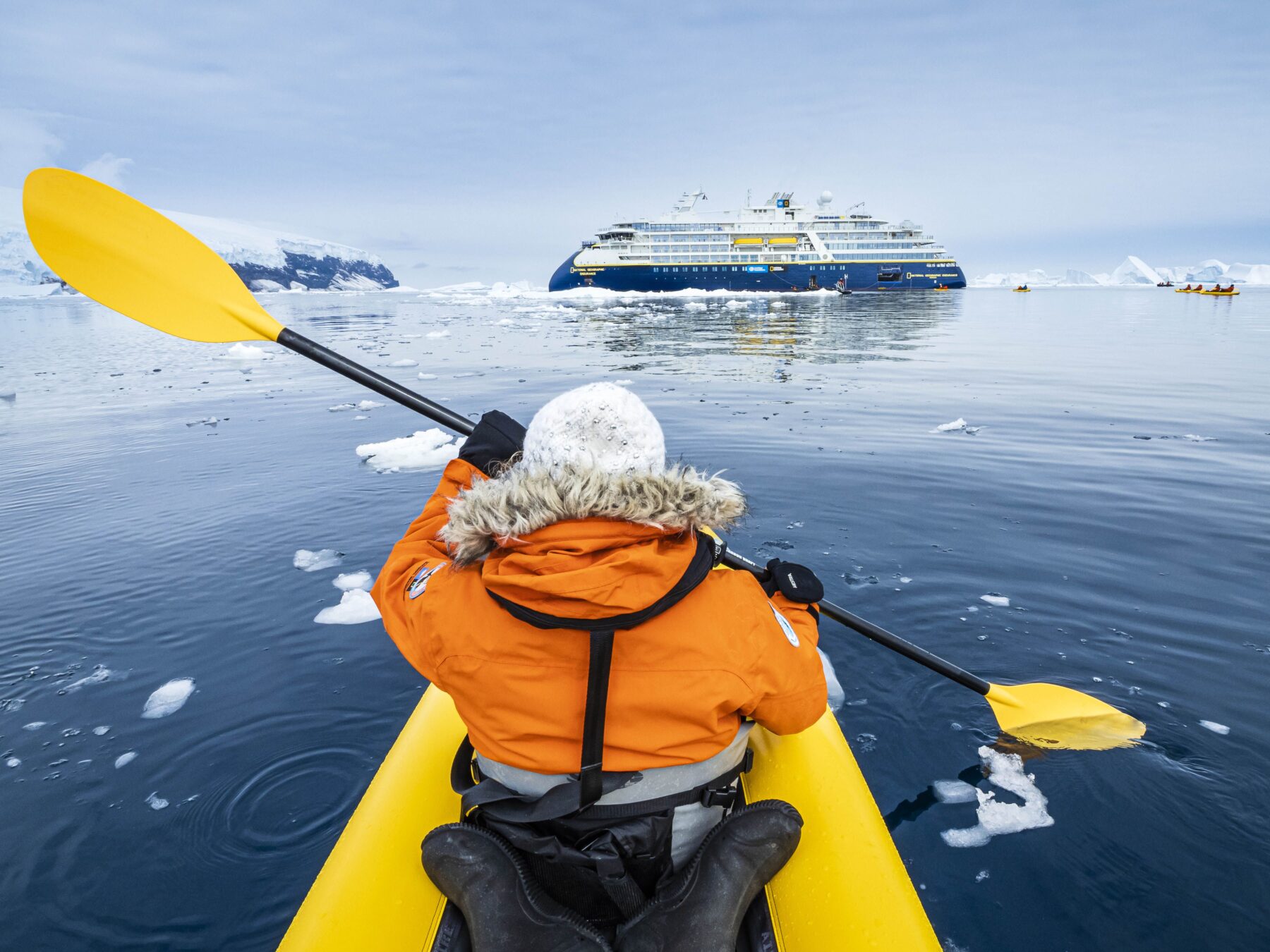
Bypassing Drake Passage allows travellers to spend more time viewing these wild places. But it wasn’t always so. Drake Passage is a 1000km wide deepwater passage (which is considered narrow in oceanographic terms) between Tierra del Fuego’s Cape Horn and the Shetland Islands. The passage played a significant role during the heady days of maritime trade during the 19th and 20th centuries before the Panama Canal opened in 2014 and provided a more efficient trade route. Its formidable reputation comes from Southern Ocean swells and prevailing westerly winds which meet at the confluence of the South Pacific and Atlantic Oceans in a sort of choke point. Wind and waves get ‘squeezed’ into Drake Passage as they surge around the globe. Today’s modern expedition ships offer a monumentally different experience to explorers of old. Modern technology such as stabilisers and fuel-efficient power systems ensure a significantly more comfortable and sea-kindly motion which enhances passenger comfort and ensures a relatively swift crossing. Whether conditions are benign – known as the Drake Lake – or boisterous – known as the Drake Shake – crossing Drake Passage is one of those rare, treasured memories to last a lifetime. It is indisputably a highlight of any Antarctic voyage, whether by sea or by air.
Take advantage of this rare opportunity to fly across Drake Passage and begin your Antarctic adventure refreshed, relaxed and ready to explore from the moment you first glimpse the White Continent.
This article is brought to you by Lindblad Expeditions. For more information call 1300 362 012 or email [email protected]




